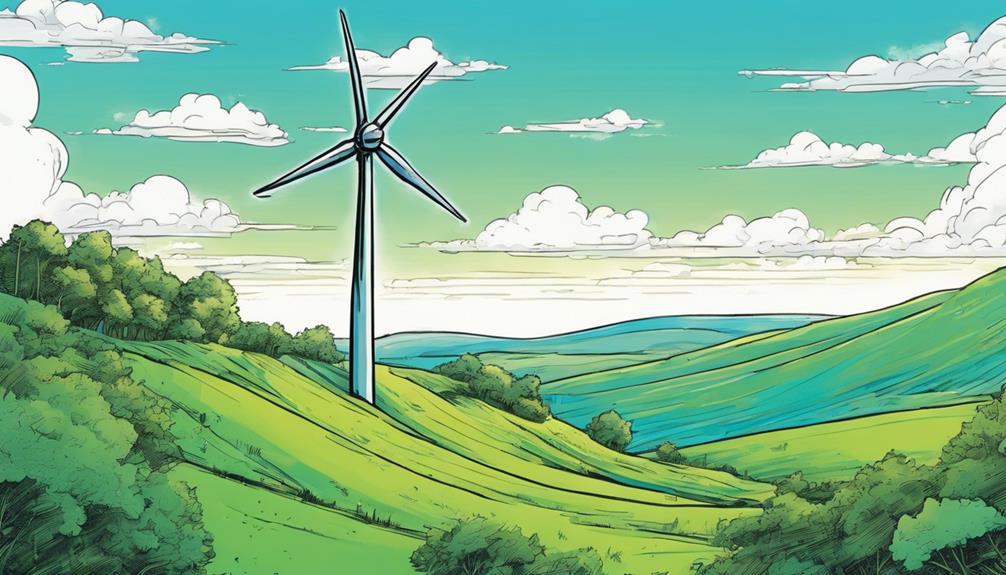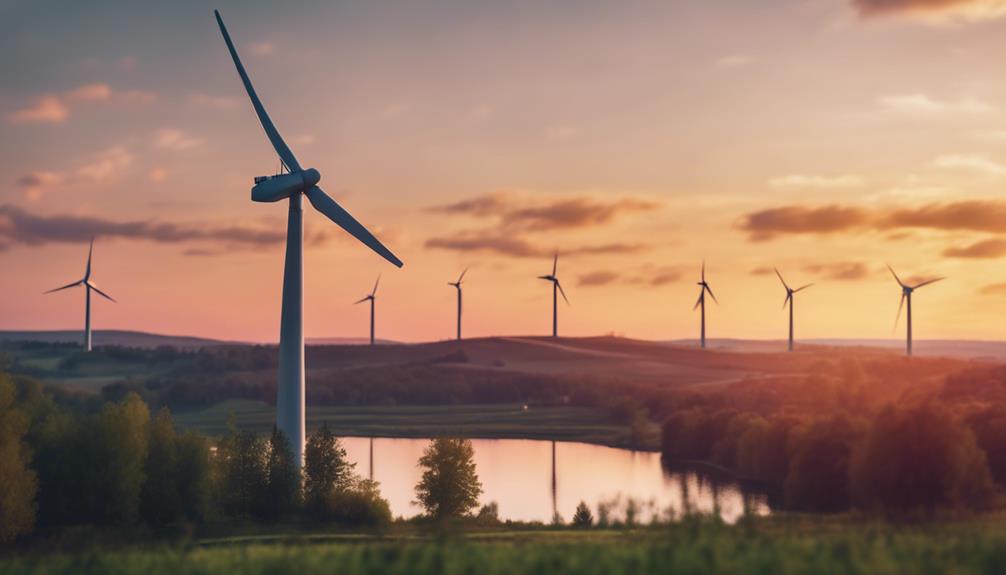Perfectly installed home wind turbines can notably slash electricity costs and carbon footprint, making them a cost-efficient and eco-friendly solution for homeowners. By tapping into wind energy, homeowners can experience reduced electricity bills, noise mitigation, and promote sustainable energy production. To guarantee a successful installation, it's essential to research local regulations, assess energy production capability, and adhere to safety guidelines. With the appropriate turbine selection and upkeep, homeowners can unlock the complete capacity of wind power. By delving deeper, homeowners can uncover the essential factors and benefits that make wind power a compelling choice.
Key Takeaways
- Research local laws and zoning ordinances to ensure a compliant wind turbine installation that meets regulatory standards.
- Evaluate site accessibility and energy production potential to determine the feasibility of a home turbine installation.
- Hire experienced technicians for safe and efficient installation, and secure mounting to guarantee stability and integration with the electrical system.
- Regular maintenance is crucial to extend the lifespan and efficiency of the wind turbine, and to minimize risks and ensure peak performance.
- Assess wind resources, local regulations, and site selection to optimize turbine performance and unlock financial and environmental benefits.
Benefits of Wind Power
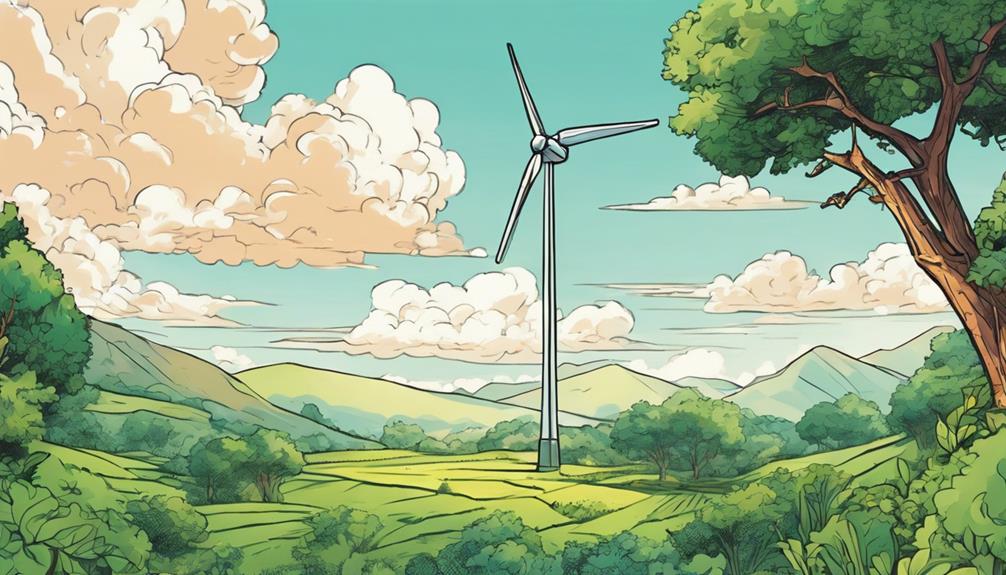
Installing a wind turbine at home can greatly reduce electricity expenses and carbon footprint, offering a cost-effective and environmentally friendly solution for homeowners.
By harnessing wind energy, homeowners can lower their electricity bills and contribute to a cleaner environment. Modern wind turbines are designed with advanced features to maximize energy production, ensuring a significant reduction in carbon emissions.
Additionally, incentives are available for clean energy generation, making wind power an attractive option for those looking to reduce their environmental impact.
With wind turbines, homeowners can enjoy cost savings, noise reduction, and a clear conscience, knowing they're supporting sustainable energy production.
Installation Considerations
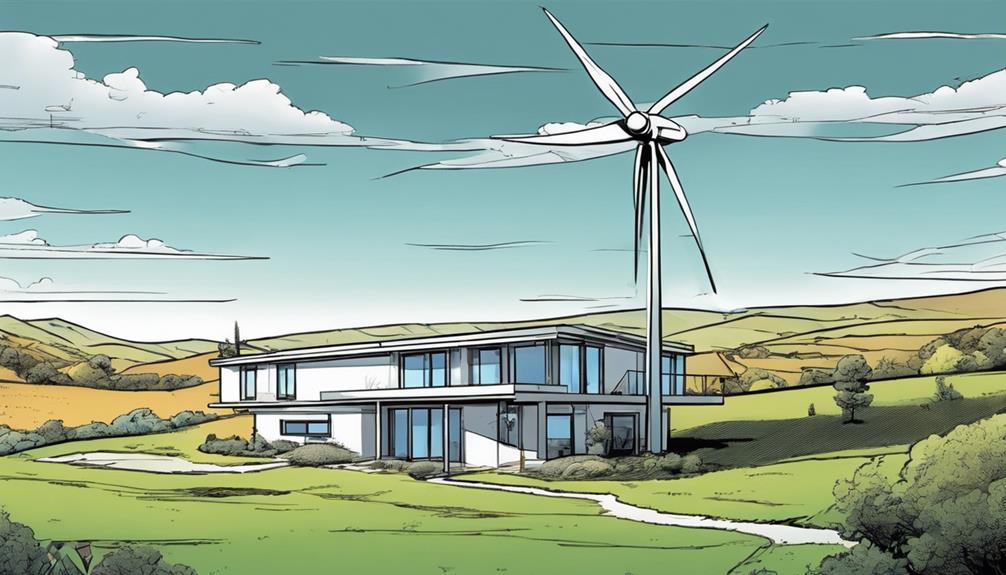
When contemplating a home wind turbine installation, homeowners must research local laws and regulations, including zoning and noise control ordinances, to guarantee a smooth and compliant process. This vital step guarantees that the installation meets the required standards and avoids potential legal issues.
Before moving forward, homeowners should consider the following key factors:
- Site accessibility: Confirm convenient access to the turbine for maintenance and repairs.
- Permit compliance: Acquire necessary permits and adhere to local regulations.
- Energy production evaluation: Evaluate the site's energy production potential to determine the turbine's feasibility.
Installation and Maintenance
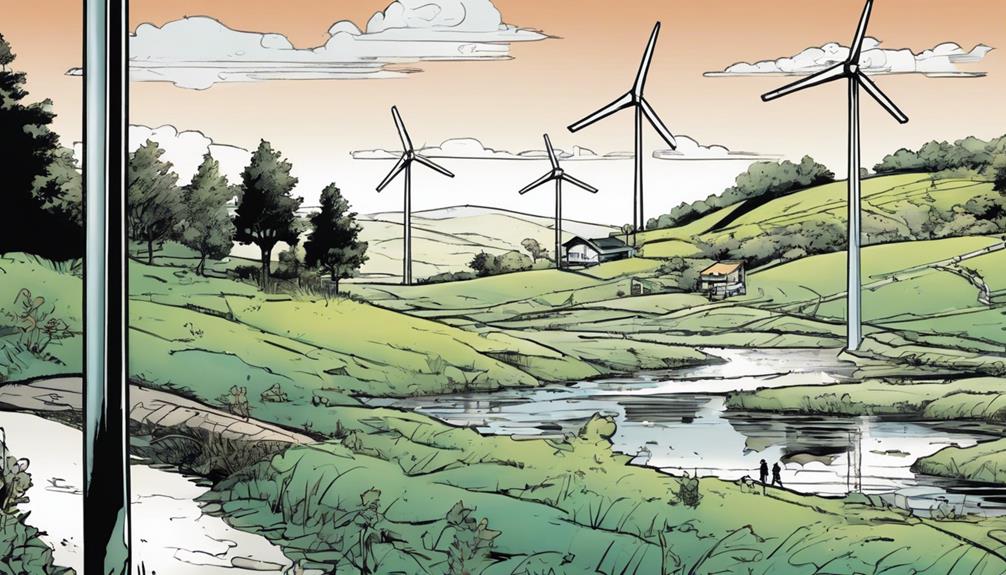
How do homeowners guarantee a safe and efficient wind turbine installation that meets their energy needs and complies with regulations?
They hire experienced technicians who can properly mount and connect the turbine. A secure mounting guarantees the turbine's stability, while integrating it into the home's electrical system allows for seamless energy production.
Thorough testing of all components is essential to ensure peak performance.
Regular maintenance is crucial to extend the turbine's lifespan and efficiency. This includes oil changes, emergency repairs, and regular inspections.
Safety protocols, such as lightning protection, must be followed to minimize risks.
Financial and Environmental Impact
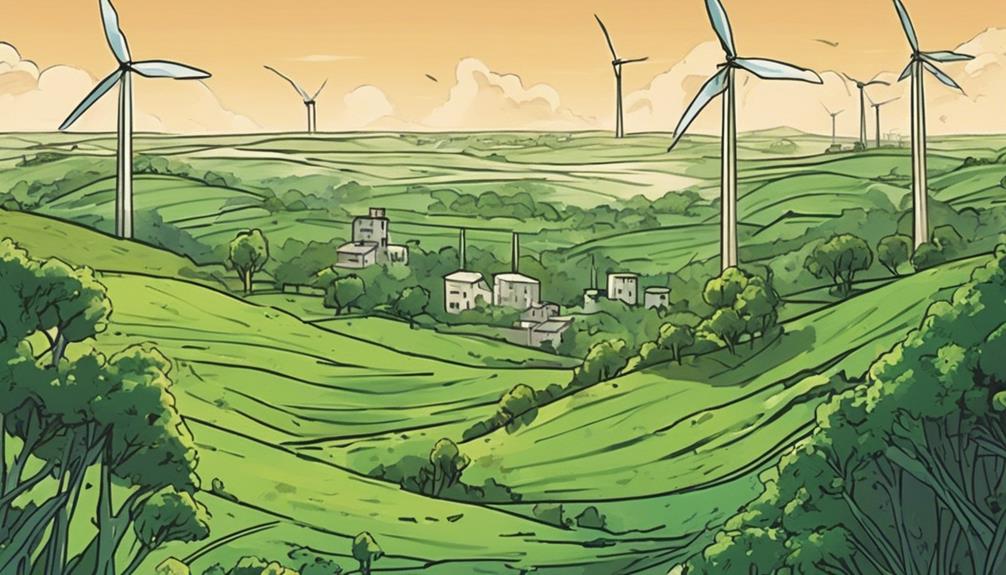
By harnessing wind energy, homeowners can lower their electricity consumption, reducing their bills and carbon footprint while also benefiting from financial incentives and contributing to a cleaner environment.
The financial benefits of wind turbines are undeniable, with significant reductions in electricity costs and government incentives for clean energy generation. Additionally, wind power has a profound environmental impact, producing no harmful emissions and reducing air pollution.
Here are just a few ways wind turbines make a difference:
- Lower electricity bills: Wind turbines reduce reliance on fossil fuels, leading to lower energy costs.
- Reduced carbon footprint: Wind power generates clean energy, minimizing greenhouse gas emissions.
- Cleaner air: Wind turbines produce no air pollutants, improving local air quality.
Additional Key Considerations
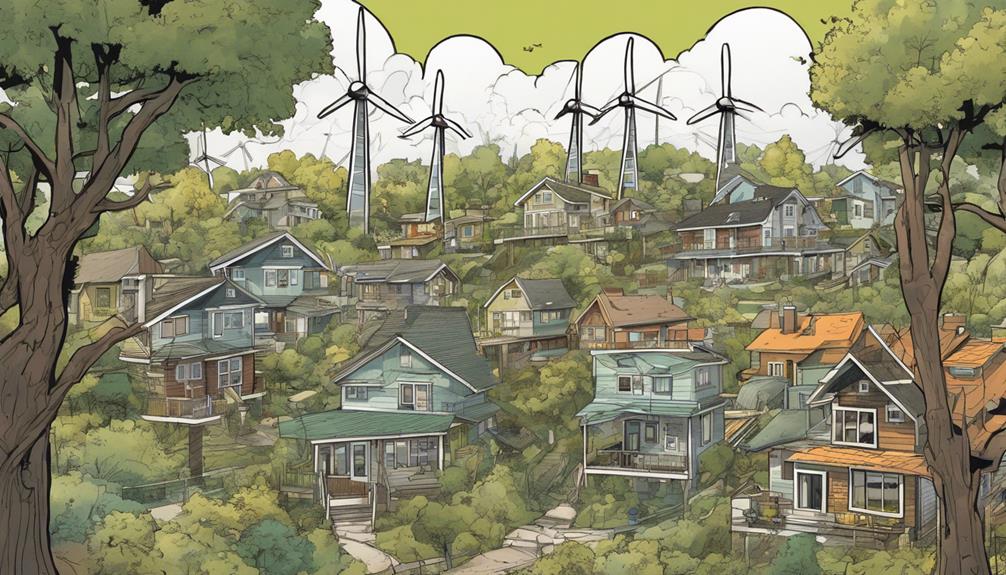
Homeowners should carefully evaluate initial expenses, energy efficiency, and specific needs when selecting a wind turbine to guarantee a successful and cost-effective installation.
It's important to assess wind resources, local regulations, and site selection to achieve peak performance.
A thorough cost analysis will help homeowners determine the turbine's feasibility.
Additionally, monitoring and optimizing turbine performance, following maintenance and safety guidelines, and considering financial incentives are essential for a successful installation.
Frequently Asked Questions
Can I Install a Wind Turbine on a Rented Property?
She should check her rental agreement and local regulations before installing a wind turbine on a rented property, as permission from the landlord and compliance with zoning laws may be required.
How Long Does It Take to Recover the Initial Investment Cost?
On average, it takes around 7-10 years to recover the initial investment cost of a wind turbine, considering the savings on electricity bills and incentives. This timeframe may vary depending on factors like turbine efficiency, wind speed, and local policies.
Are Wind Turbines Suitable for Urban or Densely Populated Areas?
They find wind turbines generally unsuitable for urban or densely populated areas due to limited space, noise concerns, and obstructed airflow, making it difficult to generate sufficient power and guarantee safe operation.
Can I Install a Wind Turbine Myself Without Professional Help?
She shouldn't attempt to install a wind turbine herself without professional help, as it requires specialized knowledge, equipment, and permits, ensuring safety, compliance, and best performance.
Are There Any Recycling Options for Old or Decommissioned Turbines?
Did you know 85% of a wind turbine's components can be recycled? Yes, old or decommissioned turbines can be recycled, reducing waste and promoting sustainability. Manufacturers and recycling facilities offer take-back programs and responsible disposal options.
Is DIY Wind Turbine Installation Safe and Effective for Home Use?
Installing a DIY wind turbine for home use can be both safe and effective if proper precautions are taken. Before constructing a wind turbine, it is important to research local regulations and ensure the location is suitable for harnessing wind power. Consulting with a professional is recommended for a successful installation.
Conclusion
As homeowners increasingly turn to wind turbines, they're discovering a reliable and eco-friendly source of energy. By harnessing the power of wind, they can greatly reduce electricity expenses and carbon footprint.
In fact, a single wind turbine can power a home for up to 20 years, offsetting around 2.5 tons of carbon dioxide annually – equivalent to planting over 100 trees.
With the right guidance, homeowners can access the full potential of wind energy and reap its numerous benefits.
